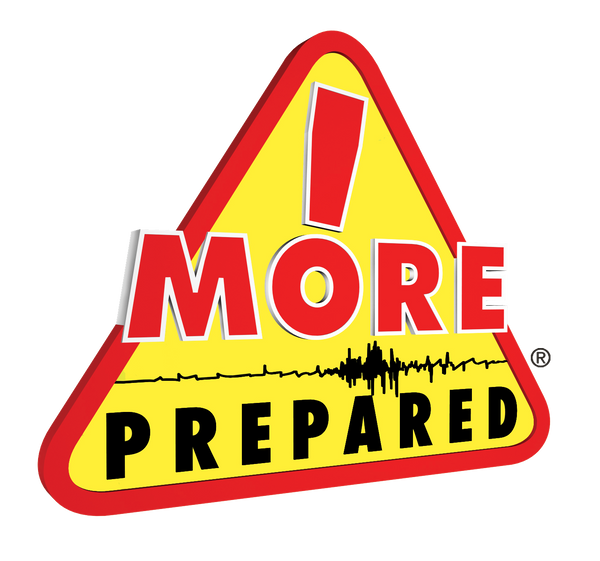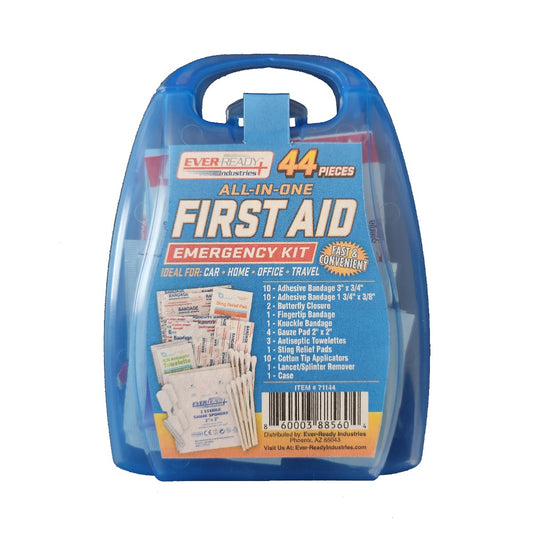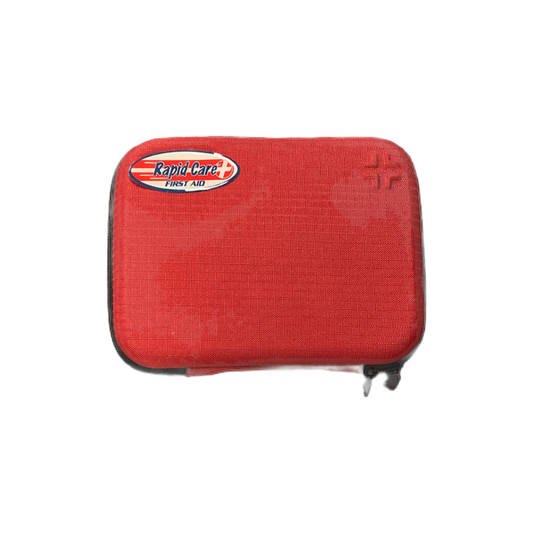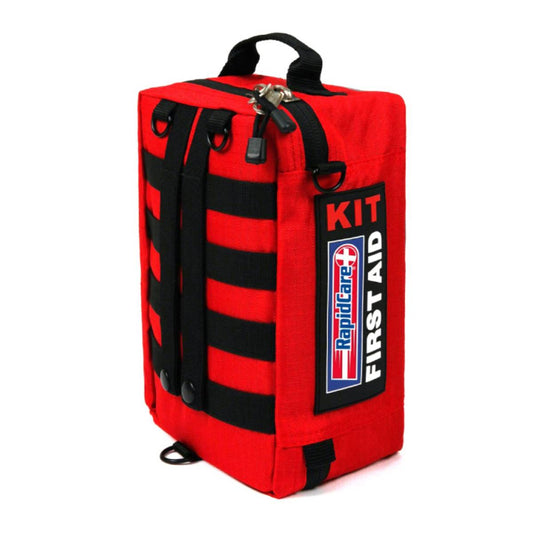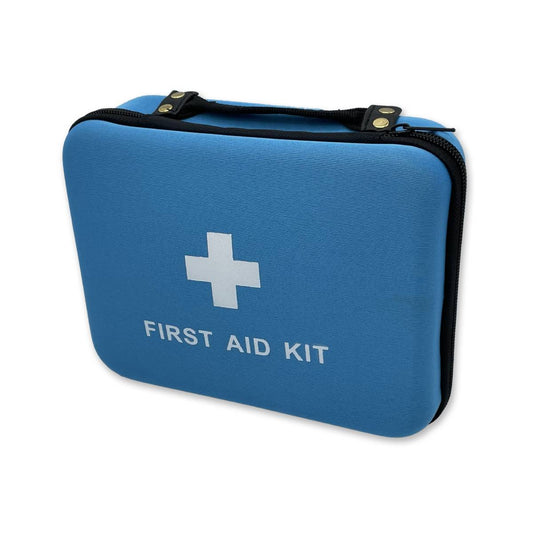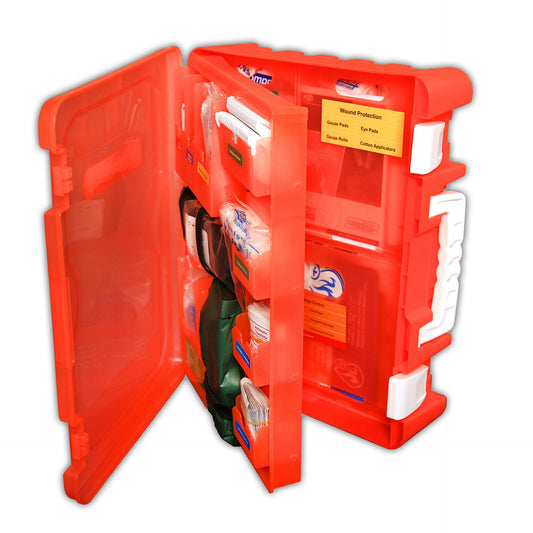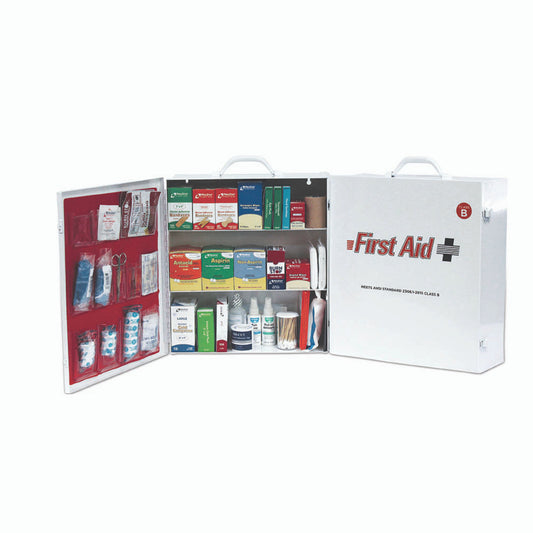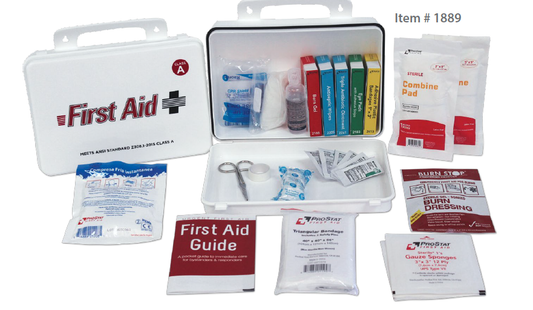Collection: First Aid & Trauma Kits
First aid and trauma kits provide fast, reliable medical supplies for treating injuries during emergencies. Our kits include bandages, antiseptics, gauze, gloves, tools, and trauma-grade components designed to support homes, workplaces, schools, and response teams. Choose from basic first aid kits, trauma kits, bleeding control kits, and OSHA-compliant workplace supplies.
-
Ever Ready Industries 44 Piece First Aid Kit
Regular price $3.50Regular priceUnit price / per -
Ever Ready Industries 95 Piece First Aid Kit
Regular price $8.95Regular priceUnit price / per -
Rapid Care 102 Piece First Aid Kit
Regular price From $8.97Regular priceUnit price / per -
First Aid Only FAO134 - 200 Piece First Aid Kit
Regular price $29.95Regular priceUnit price / per -
Rapid Care 217 Piece Outdoor Workplace First Aid Kit
Regular price $79.00Regular priceUnit price / per -
Rapid Care 160 Piece All-Purpose First Aid Kit
Regular price $26.95Regular priceUnit price / per -
Rapid Care 100 Person 217 Piece Trauma Kit - ANSI 2021
Regular price $79.95Regular priceUnit price / per -
50 Person Trauma Kit
Regular price $229.00Regular priceUnit price / per -
100 Person Trauma Kit
Regular price $395.00Regular priceUnit price / per -
500 Person Trauma Kit
Regular price $1,095.00Regular priceUnit price / per -
1,000 Person Trauma Kit
Regular price $1,995.00Regular priceUnit price / per -
2-Shelf Industrial First Aid Cabinet - ANSI Class A 2021
Regular price $119.00Regular priceUnit price / per -
3-Shelf Industrial First Aid Cabinet - ANSI Class B 2021
Regular price $199.00Regular priceUnit price / per -
4-Shelf Industrial First Aid Cabinet - ANSI Class A 2021
Regular price $229.00Regular priceUnit price / per -
10 Person First Aid Kit - ANSI Class A
Regular price $34.00Regular priceUnit price / per -
25 Person First Aid Kit - ANSI Class A
Regular price $39.00Regular priceUnit price / per
First Aid and Trauma Kits provide essential medical supplies for treating injuries during emergencies, disasters, and everyday accidents. Our collection includes basic first aid kits for minor injuries and advanced trauma kits designed for severe bleeding, fractures, burns, and life-threatening situations. These kits meet FEMA, OSHA, and Red Cross guidelines to support homes, businesses, schools, and emergency response teams.
We offer compact first aid kits for vehicles and personal use, workplace first aid cabinets, trauma backpacks for responders, classroom medical kits, and bleeding control kits equipped with tourniquets, compressed gauze, pressure dressings, gloves, shears, and emergency blankets. Supplies are selected for durability, sterility, and real-world effectiveness in high-stress situations.
More Prepared also offers OSHA- and ANSI-compliant first aid kits for offices, warehouses, industrial settings, and public facilities. Trauma kits are available in various levels of complexity, from basic bleeding control kits to fully equipped emergency response packs used by schools, law enforcement, community groups, and volunteer responders.
All kits are assembled and inspected by the More Prepared team in our California facility to ensure accuracy, quality, and readiness. Whether you are creating a home first aid station, upgrading workplace medical supplies, or preparing for large-scale emergencies, our First Aid and Trauma Kits provide reliable tools for fast intervention and better outcomes.
FAQ
What is the difference between a first aid kit and a trauma kit?
A first aid kit is designed for minor injuries such as cuts, scrapes, and burns, while a trauma kit focuses on life-threatening emergencies like severe bleeding, fractures, and shock. Trauma kits typically include tourniquets, pressure dressings, and advanced wound care supplies.
What should be included in a trauma kit?
A trauma kit should include a tourniquet, compressed gauze, pressure dressings, chest seals, gloves, trauma shears, emergency blankets, antiseptics, and bandages. These supplies support rapid bleeding control and stabilization while waiting for professional medical help.
Do workplaces need OSHA-compliant first aid kits?
Yes, OSHA requires employers to maintain accessible first aid supplies that match workplace hazards. ANSI-compliant first aid cabinets, boxes, and refills are commonly used to meet these requirements.
How many first aid kits does a home or workplace need?
Homes typically need one main kit plus smaller kits for vehicles. Workplaces may require multiple kits depending on employee count, building size, and industry risks. Facilities such as warehouses or schools often place kits in multiple locations.
Do first aid kits expire?
Some components: like antiseptics, medications, and sterile dressings, do expire. We recommend checking your kit annually and replacing any outdated or used items. Tools such as shears, gloves, and blankets do not expire but should be inspected regularly.
Are bleeding control kits necessary?
Yes, bleeding control kits provide critical supplies for severe bleeding, which can be fatal within minutes without intervention. Schools, offices, churches, and public facilities increasingly maintain bleeding control kits as part of their emergency planning.
Can first aid or trauma kits be customized?
Absolutely. More Prepared can customize kits for schools, offices, industrial facilities, emergency teams, and community groups. You can add or remove items to meet specific hazards or compliance requirements.
Who uses trauma kits?
Trauma kits are used by schools, law enforcement, security teams, workplaces, community responders, and households that want to be prepared for serious emergencies. They are also common in earthquake and disaster preparedness planning.
